
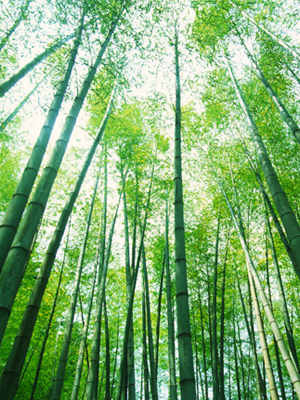
BAMBOO GROWING
Bamboos come in over a thousand different species and dozens of garden varieties are wonderful, mysterious and elusive plant that baffles taxonomists who try to contain it within a botanical class and gardeners who try to contain it within a limited garden space as they learn how to grow bamboo.
For many years, bamboo was thought to be a primitive grass but recent DNA testing has shown it to be one of the most highly evolved forest grasses. There are over 1200 forms of bamboo that grow in a broad spectrum of color including the familiar green and gold as well as burgundy, blue and even black grasses.
In eastern Asia they are used for almost everything from building homes, to making furniture and their shoots are even used in cooking. There are two distinct types of bamboo - clumping and running. If growing bamboo in your garden, it is important to understand the differences.
Clumping bamboos
Gardeners would be wiser to stick to clumping types of bamboo despite the beauty of running bamboos. The hedge bamboo (Bambusa multiplex) comes in different forms including 'Fernleaf Stripestem' which has green stripes, 'Willowy' with more arching branches and 'Alphonse Karr' with striped stems. All of these will make good specimen plants or create privacy hedges. For a grander scale clumping bamboo try Giant Buddha Belly (Bambusa vulgaris 'Wamin') which swells at the lower joints giving a distinctive appearance or another form Painted Bamboo (Bambusa vulgaris 'Vittata'), a yellow bamboo striped green.
Running bamboos
Running bamboos can cause awful trouble in the garden where they can grow from one property to another. These bamboos are classified as noxious weeds in some areas of Sydney. So if you're growing running bamboo such as the Golden Bamboo (Phyllostachys aurea), Green Onion bamboo (Pseudosasa japonica 'Tsutsuminia') or Black bamboo (Phyllostachys nigra) confine them in pots or in garden beds lined with concrete, special rubber or other impervious barriers. The depth of the barrier needed varies among species but to be safe it should be at least 1m (3') deep.
Note: Galvanised iron is not suitable because the rhizomes will eventually find the joins and also because it will rust over time.
Eradication
The best way to eradicate bamboo is to tackle the whole clump, one stem at a time. Cut off each stem about 15cm (6") above ground level and immediately paint it with undiluted Round Up. The sap moves back down the stem and draws the poison back with it, effectively killing the whole plant. Repeat treatments may be required in some cases.
PropagationBamboos rarely set seed and so have to be propagated from cuttings or from pieces of rhizome (root-like subterranean stems). This makes some of the clumping bamboo varieties quite expensive to purchase.
Suggested Varieties
Fargesia murieliae 'New Umbrella' makes a beautiful specimen or screen. Nice golden fall color.
Clumper
Full Sun to Partial Shade
12 'H x 12'W
Fargesia nitida 'Great Wall' Considered a fountain bamboo. The emerging culms are covered in bluish-white powder and don't leaf out until the following spring. This branchless, leafless appearance gives it the 'fountain' shape throughout the winter. Extremely cold hardy.
Clumper.
Full Sun to Partial Shade
18' H x 12' W
Pleioblastus fortunei 'Litte Zebra' Green and white striped leaves make a bright groundcover under trees and shrubs. Can also be grown successfully in containers and indoors.
Running Groundcover (Keep Contained
Full Sun to Partial Shade
Up to 2' tall.
Phyllostachys nigra 'Black Bamboo' New culms start out green and turn black in the sun.
Runner
Full Sun
30' H
New variety
The Baby Panda Bamboo (Pogonatherum paniceum) is an interesting grass from the rainforests of south-east Asia. It is like a dwarf bamboo but is not a true bamboo and is more closely related to sugar cane. It can be used as a pot plant inside well-lit houses, balconies or as an interesting feature plant around ponds, steps or bordering gardens. It likes lots of moisture and will take filtered light to full sun. Clumping bamboos are available from specialist. Some of the more common running bamboos can be purchased from general nurseries.TIMBER BAMBOOTimber bamboos grow to 30 + feet x 3 + inches in diameter. These large bamboos will grow in full sun to partial shade. All are hardy in the Northwest.
Chinese Timber Bamboo (Phyllostachys vivax)
Very upright habit. A very popularfast growing bamboo displaying green culms with large green leaves. It makes a nice stand of bamboo with varying shades of green. This is the most common timber bamboo in the Northwest. Hardy to -5º F.
Golden Timber Bamboo (Phyllostachys vivax‘Aureocaulis’)
Arching habit. This is a rare and awesome golden version of Chinese Timber bamboo that often will get a thin green stripe on some culms. Hardy to -5º F.
Striped Timber Bamboo (Phyllostachys vivax‘Hwanwenzhu’)
Height to 50 ft. This extremely rare bamboo has green culms with a bright yellow groove.A truly unique plant. Hardy to -5º F.
Giant Grey Bamboo (Phyllostachys nigra‘Henon’)
Straight and very compact habit. This is a nice green bamboo that fades to light green/grey as it ages. Hardy to -5º F.
Moso Bamboo (Phyllostachys edulis‘Moso’)
One of the largest bamboos that can grow in the Northwest, Moso can grow to 8 in. in diameter and 50 ft. in height. A slow grower with hairy grey-green culms. The leaves are very delicate looking and have a wonderful layered effect.
Incense Bamboo (Phyllostachys atrovaginata)
Very upright habit. A bamboo with light green colored culms reaching to 35 ft. in height. One of the best bamboos for a wet area,and large in diameter in comparison to its height.
LARGE BAMBOO
These running bamboos grow to 15-25 ft. in height with a diameter of 1- 3 in. They tolerate full sun to partial shade.
Black Bamboo (Phyllostachys nigra)
Nice arching habit. A very popular variety of bamboo with culms that eventually turn a deep black color. Wonderful specimen plant.
Tiger Bamboo (Phyllostachys nigra‘Bory’)
Very upright habit. Bamboo with black splotches on the canes –never turning completely black – commonly called Snakeskin Bamboo.
Butterscotch Bamboo (Phyllostachys bambusoides‘All Gold’)
Nice upright habit. Beautiful yellow-gold culms that turn a butterscotch color as they age. This plant has a wonderful contrast between the green leaves and the yellow culms
Nude Sheath Bamboo (Phyllostachys nuda)
Graceful small leafed bamboo with culms that emerge a very black color with white powder on them. Culms turn from dark green to light green as they age. A most hardy bamboo for this area.
Bisset’s Bamboo (Phyllostachys bissetii)Upright habit. A densegreen bamboo with white rings on the nodes.
Crookstem Bamboo (Phyllostachys aureosulcata‘Alata’)
Interesting zig zag on lower portion of many of the culms. They are green in color, emerging dark and turning lighter with age.
Yellow Groove Bamboo (Phyllostachys aureosulcata)
Very upright habit. Green culms with bright yellow groove. Spectabilis Bamboo (Phyllostachysaureosulcata‘Spectabliis’)
Upright habit. This fast growing bamboo has bright yellow culms with a green groove on canes that sometimes zig zag on the bottom. It is the hardiest bamboo with yellow and green striped color patterns. When grown in a full sunny location, the new culms have a spectacular red highlight in the spring and early summer. A spectacular bamboo.
Japanese Yellow Striped Bamboo
(Phyllostachys bambusoides ‘Castillon Inversa’
A slower growing bamboo that has green culms with with a bright yellow groove. New canes are a gorgeous green and yellow color. Rare.
Golden Bamboo (Phyllostachys aurea)
Very upright habit. A green bamboo with a light yellow hint in its leaves. Also called Tortoise Shell bamboo for the way the lower nodes are distorted and compress at the base
Koi Bamboo (Phyllostachys aurea‘Koi’)
Straight habit. A variation of aurea that has distinct yellow culms with a green stripe but keeps the distorted turtle shell nodes compressed at the base. Probably the most popular aurea for its color. Rare.
Holochrysa Bamboo (Phyllostachys aurea‘Holochrysa’)
Straight habit. This bamboo has truly golden culms and keeps the distorted turtle shell nodes compressed at the base. Very rare. Flavens Inversa Bamboo(Phyllostachys aurea ‘Flavens Inversa’)
Straight habit. A green culmedversion of aurea with yellow stripes.
MEDIUM & SMALL BAMBOO
This group of bamboos is less than 15 feet in height.
They are all unique bamboos - appreciated for the differences in their leaves as well as their culms.
Tranquil Bamboo (Hibanobambusa tranquilans‘Shiroshima’)
A shorter bamboo with large variegated leaves. It grows almost like a tall shrub (to 16’) in full sun, but can tolerate some shade in the afternoon. It can be pruned to control its height. It also grows well in a pot and can even be used indoors as a houseplant. Outdoors in the winter, the leaves get a little ragged, but come late spring they flush out nicely.
Chino Bamboo (Pleioblastus Chino Vaginatus Variegatus)
The thin, curly, variegated leaves growing on this variety make for a very unusual specimen plant. It is a vigorous grower that attains a maximum height of 6’– 8’.
Usawai Bamboo (Pseudosasa usawai)
A full bamboo with a wide leaf that grows to 15’ in height. It prefers afternoon shade.
Chinese Walking Stick (Qiongzhuea tumidissinoda)
A very unique bamboo with swollen nodes that look like saucers. This bamboo has green culms with beautiful delicate green leaves and grows to 12’.
CLUMPING BAMBOO
These bamboos form clumps and do not run.
Weeping Bamboo (Yushania maculata)
Yushania is fairly dense bamboo with traditional arching habit. In spring, the green culms have a white powder on them. It is a semi-clumper, meaning it doesn’t run but it sends out long rhizome necks and spreads 8-12 inches at a time. 10’-12’ in height.
Blue Fountain Bamboo (Fargesia nitida)
Slight arching habit to 12’. A very popular clumping bamboo, Fargesias have delicate leaves that bunch on the culm. This variety, with maroon culms, enjoys a shady spot, maybe with some morning sun. This is one of the most striking bamboos – but keep it out of the afternoon sun.
Chilean Feather Bamboo (Chusquea culeo)
A very unique clumbing bamboo that will reach 15’ in height. The leaves are well organized in a tight bunch on the culm.
Chocolate Bamboo (Chusquea culeo ‘Cana Prieta’)
Cana Prieta is a beautiful and rare variety of bamboo with culms that are a chocolate brown in color. The leaves are tightly packed at each node. A very rare and tight clumper. Height to 12.’
Coffee Bamboo (Borinda boliana)
This is a spectacular looking clumping bamboo with very elegant leaves and a dark rich coffee colored culm when mature (to 24’). In very severe cold, it may die back, but will revive and look good again that year. Giving it some winter protection is a great idea. Hardy to 10º F
Some varieties of bamboo can grow up to a foot a day and ultimately reach 130 feet tall while the smallest bamboo cultivar attains only six inches of growth.
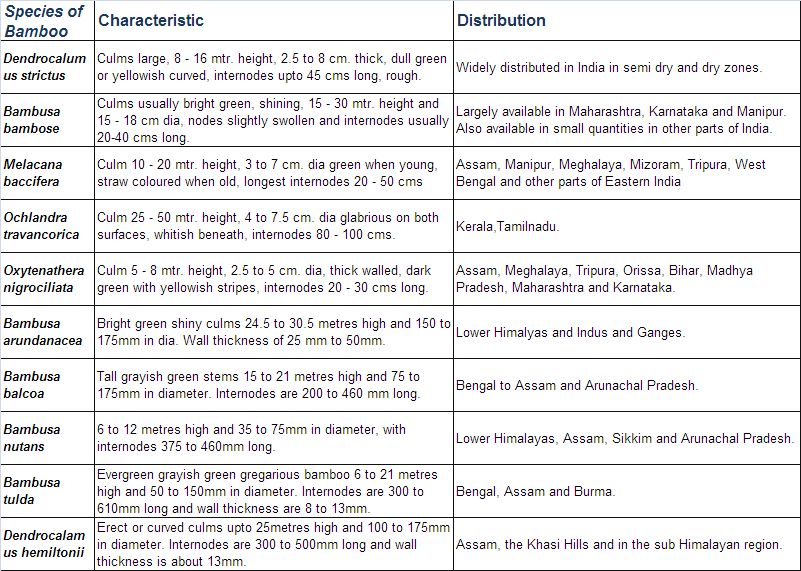
The first step in learning how to grow bamboo is picking a cultivar and beginning to unravel its many mysteries. While most of us picture tall stands of green and golden canes growing in tropical bamboo forests, bamboo cultivars range from the temperate to the tropical.
Bamboo has over 1500 documented uses that range from use in construction to the making of acupuncture needles and from agricultural fodder to the making of musical instruments. Until they are cut, bamboos stems are properly called culms and not canes.
In India bamboo plants are commonly called the 'Wood of the poor' and in China the" friend of the people'. To add to the confusion, a cultivar commonly sold as “lucky bamboo" isn’t bamboo at all but a type of lily from the Dracaena family!
Unluckily for bamboo, it has the reputation for being an invasive plant, growing from running rhizomes. Although this is true for some cultivars, the most cold-hardy plants don’t run at all, but grow from well-behaved clumps with well-established root systems.
One thing that bamboo cultivars do have in common is that they are perennial plants. As noted above, some bamboos varieties are temperate and some are tropical. Because its diversity, it’s easy to find a suitable cultivar when you want to learn how to grow bamboo. Bamboo cultivars range from those that grow indoors to outdoors, in a garden or in a container, in bright light or shade.
Two considerations in knowing how to grow bamboo successfully are water and air. All true bamboos are grasses and won’t grow in saturated soils. They also need air circulation to thrive. In fact, some bamboo growers raise the pots of their small cultivars on chopsticks to provide air circulation under the plant as well as around it. Large pots are often elevated with heavy dowels.
The bamboo is a symbol of long life, strength and versatility for many cultures of the world. Unraveling its mysteries is a continuing source of enjoyment. When you know how to grow bamboo, you’ll find that your love for the plant grows as fast as your bamboo does!
Bamboo – uses:
Bamboo is used in making baskets, bicycle frames, bird cages, blinds, boats, bridges, brushes, buckets, canoes, carts, charcoal, chopsticks, clothing, cooking utensils, diapers, fans, fences, firewood, fishing rods, food steamer, furniture, garden tools, handicrafts, hats, incense, musical instruments, paper, particle board, pens, pipes, ply ,roofing, scaffold, tableware, toilets, toothpicks, toys, umbrellas, walking sticks and that's really only just scratching the surface.
Another important use for bamboo is food. The shoots are used in many Asian countries as a vegetable - sometimes eaten raw, or steamed and boiled. I can't say I'm a big fan of it, but given a choice between a bowl of bamboo shoots and a bowl of twigs, I'd certainly opt for the bamboo. China makes beer from bamboo.
There also appears to be some medicinal applications for bamboo - and even perfume is being made from the stuff!
Bamboo - you can wear it, you can eat it, you can build with it. Bamboo may increasingly replace plastics and wood products - what a marvellous gift from nature!
Consider bamboo alternatives when purchasing items - despite some ongoing debate about the exploitation of bamboo and associated production processes of bamboo goods, it's readily renewable, sustainable and still seems to have a lot less environmental impact than chemical-ridden crops, destruction of old growth forests and petroleum-derived materials.



BAMBOO BLINDE BAMBOO BLINDE BAMBOO BLINDE

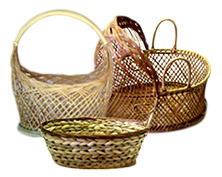
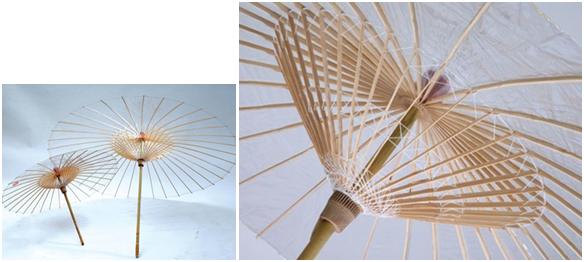
BAMBOO TABLE MAT BAMBOO BASKETS BAMBOO UMBRELLIAS

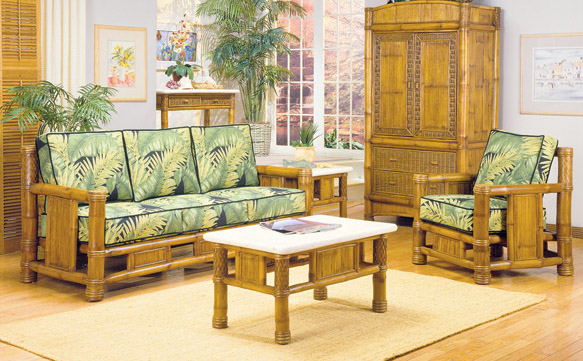
BAMBOO DINING FURNITURE BAMBOO LIVING ROOM FURNITURE


BAMBOO HOUSE BAMBOO HUT